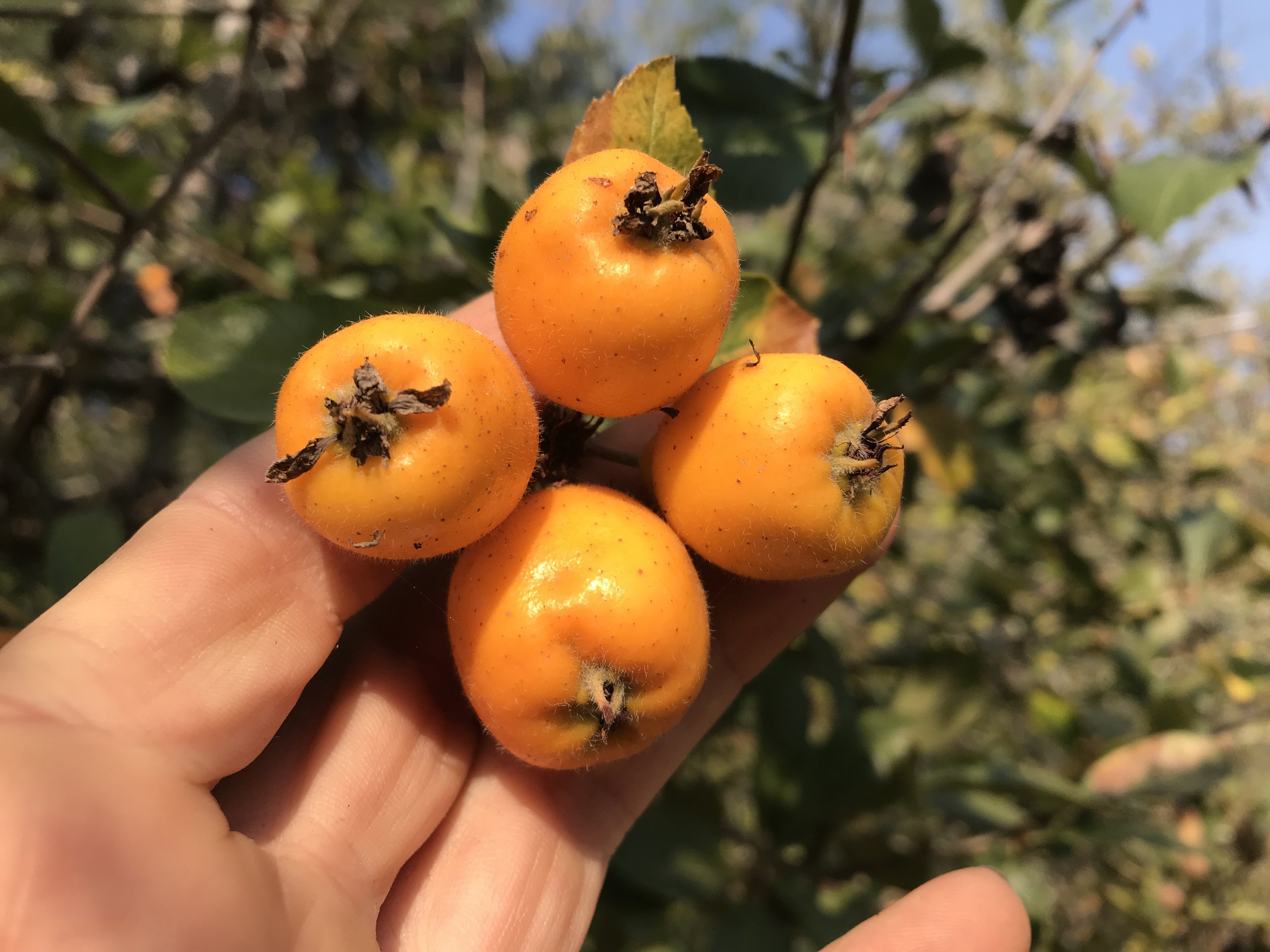I encountered this Mexican hawthorn tree at the Gold Ridge Experimental Farm in Sebastopol, CA - Luther Burbank’s former laboratory. Although much of the acreage has long been converted to housing development and only a small tract of the former farm remains, there are some interesting trees surviving. One area I return to whenever I visit is the small group of Cratageus species in the back where a few species, including C. mexicana, are still thriving.
Compared to the Chinese Hawthorn, C. pinnatifida, the Mexican hawthorn tastes much better out of hand and has an interesting aroma, reminiscent of some obscure tropical fruit or synthetic bubblegum.
The fruit of Crategeus mexicana is eaten in Mexico cooked, raw, or canned. It resembles a crabapple, but it has three or sometimes more brown hard stones in the center. It is a main ingredient used in ponche, the traditional Mexican hot fruit punch that is served at Christmas time and on New Year's Eve. On Dia de los Muertos tejocote fruit as well as candy prepared from them are used as offerings to the dead, and rosaries made of the fruit are part of altar decorations. A mixture of tejocote paste, sugar, and chili powder produces a popular Mexican candy called rielitos, because it resembles a tiny train rail.
In some parts of Mexico, tejecote is taken for treating flu and cough, and also to prevent several cardiovascular diseases.
Due to its high pectin content, the fruit is industrially processed to extract pectin for the food, cosmetic, pharmaceutical, textile and metal industries.
Other uses include food for livestock (for which the leaves and fruits are used) and traditional medicinal uses; a Mexican hawthorn root infusion is used as a diuretic and as a remedy for diarrhea and fruit-based preparations are a remedy for coughing and several heart conditions.
The Mexican hawthorn tree's wood is hard and compact, it is good for making tool handles as well as for firewood.
